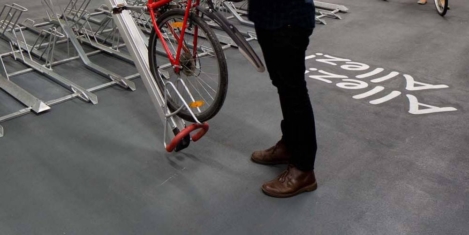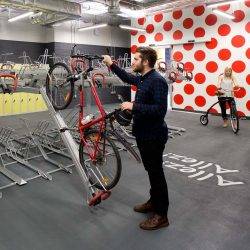July 31, 2017
Being on a temporary or zero-hours contract is bad for your wellbeing, especially if you’re young
 Two major new studies claim to show the impact of temporary or insecure work on the wellbeing of people, especially younger workers. Research into the lives of 7,700 people from the UCL Institute of Education (IOE) suggests that young adults who are employed on zero-hours contracts are less likely to be in good health, and are at higher risk of poor mental health than workers with stable jobs. Meanwhile, an analysis from the Institute for Public Policy Research (IPPR) and Business in the Community suggests that younger workers (born since 1982) in part-time and temporary work – or who are underemployed and/or overqualified – are more likely to experience poorer mental health and wellbeing, compared to younger workers in more permanent and secure work.
Two major new studies claim to show the impact of temporary or insecure work on the wellbeing of people, especially younger workers. Research into the lives of 7,700 people from the UCL Institute of Education (IOE) suggests that young adults who are employed on zero-hours contracts are less likely to be in good health, and are at higher risk of poor mental health than workers with stable jobs. Meanwhile, an analysis from the Institute for Public Policy Research (IPPR) and Business in the Community suggests that younger workers (born since 1982) in part-time and temporary work – or who are underemployed and/or overqualified – are more likely to experience poorer mental health and wellbeing, compared to younger workers in more permanent and secure work.











 Nearly three quarters (71 percent) of small and medium enterprises (SMEs) say that staff absenteeism is having a big impact on profitability suggests a new survey from Moorepay. The research found that many UK SMEs are experiencing higher than average absenteeism in their business. According to the Office for National Statistics, the average number of sick days for a UK employee is
Nearly three quarters (71 percent) of small and medium enterprises (SMEs) say that staff absenteeism is having a big impact on profitability suggests a new survey from Moorepay. The research found that many UK SMEs are experiencing higher than average absenteeism in their business. According to the Office for National Statistics, the average number of sick days for a UK employee is 











 The quality of the cycling facilities being offered by many workplaces are currently falling short and risk undermining a Government drive to increase the number of people cycling to work; as according to new research published by the British Council for Offices, 16 percent of office workers claim that inadequate facilities are discouraging them from considering commuting by bike. In April, the Department for Transport stated an aim to double the number of cycling stages, defined as a change in the form of transport as part of a longer “trip” (e.g. cycling to the train station before catching a train to work), from 0.8 billion stages in 2013 to 1.6 billion in 2025. However, new research, commissioned by the British Council for Offices and carried out by Remit Consulting, finds that whilst 83 percent of workplaces in the UK offer some form of bike storage, less than half (47 percent) of this is covered and secure. Improved parking facilities could help increase numbers of those cycling to work, with 16 percent of office workers surveyed saying that better bike storage would encourage them to do so.
The quality of the cycling facilities being offered by many workplaces are currently falling short and risk undermining a Government drive to increase the number of people cycling to work; as according to new research published by the British Council for Offices, 16 percent of office workers claim that inadequate facilities are discouraging them from considering commuting by bike. In April, the Department for Transport stated an aim to double the number of cycling stages, defined as a change in the form of transport as part of a longer “trip” (e.g. cycling to the train station before catching a train to work), from 0.8 billion stages in 2013 to 1.6 billion in 2025. However, new research, commissioned by the British Council for Offices and carried out by Remit Consulting, finds that whilst 83 percent of workplaces in the UK offer some form of bike storage, less than half (47 percent) of this is covered and secure. Improved parking facilities could help increase numbers of those cycling to work, with 16 percent of office workers surveyed saying that better bike storage would encourage them to do so.








July 24, 2017
Employers have a growing responsibility to provide staff with cycling facilities
by Peter Ferrari • Cities, Comment, Property, Wellbeing
(more…)